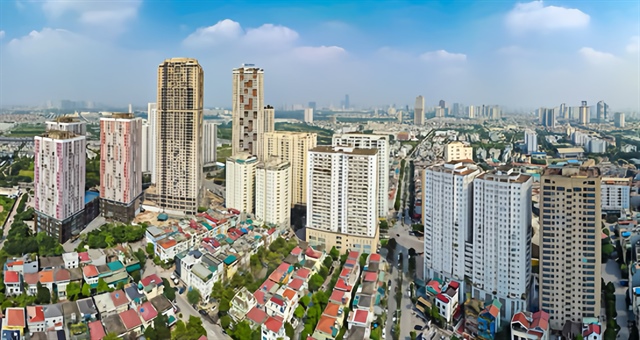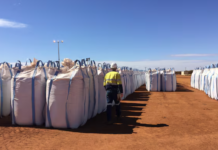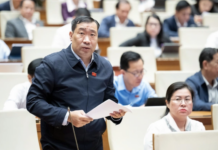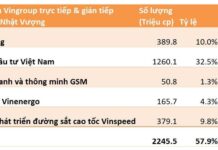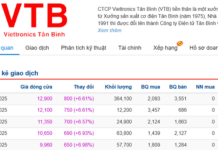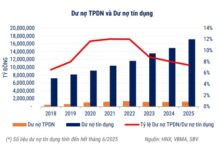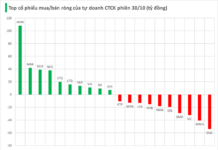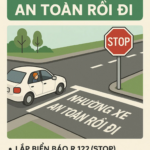According to a report recently submitted to the National Assembly monitoring delegation on the implementation of real estate market policies and social housing development from 2015-2023, figures were compiled by the State Bank of Vietnam (SBV).
In their assessment of credit supply in relation to the real estate market, the SBV reported that there has been a steady increase in outstanding credit balances for the real estate sector from 2015-2023.
Specifically, in the years 2015-2016, the outstanding balance of real estate credit reached approximately VND 400,000 billion, with a non-performing loan (NPL) ratio of around 4.2%.
In subsequent years, credit extended to the real estate sector grew rapidly.
Graph: Hong Khanh (Source: State Bank of Vietnam)
In 2017, outstanding loans for real estate businesses and construction projects increased to VND 529,000 billion, a rise of 9.21%, while the NPL ratio for real estate also increased to 4.58%.
From 2018 to the present, the outstanding balance for the real estate sector, including both real estate businesses and loans for personal use and self-construction of real estate, has consistently exhibited high growth rates.
In 2019, real estate credit surged by 23.26%, reaching a threshold of VND 1.6 million billion.
During the pandemic period of 2020-2021, annual outstanding real estate debt continued to increase by 12.06% and 15.7%, respectively.
Subsequently, in 2022, outstanding real estate debt rebounded strongly, reaching VND 2.58 million billion, representing a 23.9% increase year-over-year.
In 2023, real estate credit further increased by 11.81%, reaching VND 2.88 million billion.
Regarding the loan structure, the SBV reported that the ratio of outstanding credit for real estate is primarily composed of medium- and long-term debt (accounting for over 90% of total outstanding debt).
Graph: Hong Khanh (Source: State Bank of Vietnam)
From 2015-2023, credit to the real estate sector accounted for 18-21% of total outstanding debt in the economy.
In order to control the flow of money into real estate, the SBV has issued Circulars 36, 22, and 41 in recent years, stipulating that the ratio of mobilized capital used for medium- and long-term lending by banks should be between 24-34%.
According to the SBV, outstanding credit for real estate business activities accounts for approximately 30% of total outstanding credit for the real estate sector. This ratio has gradually decreased from 2020 to 2022 and reached its highest level in 2023.
Outstanding credit for consumption/self-use purposes in the real estate sector accounts for approximately 70%. This ratio peaked in 2022 (68.72%) and reached its lowest point in 2023 (62.12%).
Regarding guarantees for future home sales, according to the SBV, credit institutions collectively committed to providing guarantees of approximately VND 307,000 billion during the period from 2015-2023.
As of December 2023, the outstanding commitment for loan issuance to homebuyers amounted to VND 35,600 billion, representing over 4% of the total guarantee debt.
In addition, credit institutions are purchasing approximately VND 191,400 billion worth of corporate bonds as of December 2023.
Graph: Hong Khanh (Source: State Bank of Vietnam)
In their assessment of credit supply in relation to the real estate market, the SBV noted that real estate projects often have long payback periods, whereas the funding sources of credit institutions are short-term, exposing the institutions to risk when lending.
Furthermore, some credit institutions have high ratios of real estate credit to total outstanding debt, posing potential risks to credit and the safety of the institutions themselves, as well as to the banking system as a whole.
Meanwhile, outstanding credit for social housing remains relatively low.
Earlier, the Ministry of Construction had requested that the SBV continue to review and promote the provision of credit to real estate businesses.
Hong Khanh
